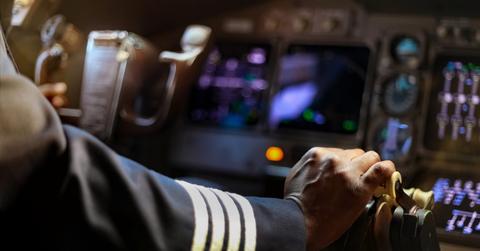Women You Should Know: Bessie Coleman

Nearly 100 years ago, Bessie Coleman, the first African American and first Native American woman to have a pilot’s license, died at the young age of 34.
Born in 1892 in Texas, her journey is one of resilience, marked by her unwavering desire to overcome racial and gender barriers in pursuit of her dreams. Faced with the refusal of American flight schools to admit her, Coleman demonstrated remarkable perseverance by moving to France, where she attended flight school and earned her pilot’s license from the Fédération Aéronautique Internationale in 1921.
Upon returning to the United States, her thrilling airshow performances captivated audiences while she used her platform to advocate for civil rights and inspire other African Americans to pursue aviation. Coleman’s courage and vision inspire future women of color in aviation, who continue to be motivated by her legacy to this day.
Early Life
Born in Texas as one of ten children to a Native American father and African American mother, Coleman excelled in segregated schools. Her father moved to Indian Territory to escape bigotry, and Bessie attended Langston University for only one semester due to financial constraints.
At 23, she moved to Chicago, where World War I stories from her brothers sparked her flying aspirations. Failing to find an American flight school that would accept her, Bessie moved to France, where women were already allowed to fly, sponsored by African American millionaire Robert Abbott, and earned her license.
Bessie the Pilot
To earn money as a pilot full time as a career, Bessie performed in air shows around the country as a stunt pilot. She would perform loops, figure 8’s, and devised new tricks, refusing to perform at any locations that were “white only,” defying dangerously racist neighborhoods in the South.
It’s important to note how dangerous her flights were, especially in an old-fashioned plane. Sometimes, she would jump straight from the plane in a parachute trick. In one crash, her plane nosed dived in California, destroying the plane and leaving her with a broken leg and cracked ribs.
This all foretold her untimely death while taking a test flight with her mechanic/co-pilot William Wills. He believed the new plane was likely suffering mechanical problems, but at her insistence, they did a test flight anyway. William was unable to control the plane, spinning it out of control. Bessie failed to buckle up and fell out of the sky, while the plane exploded and killed William.
At the time, people treated her death as little more than a footnote. White publications linked Bessie and William together as equals. While African-American press wrote tributes after her death, even they seemed to emphasize to their readers that, “there is reason to believe that the general public did not completely sense the size of her contribution to the achievements of the race as such.”
Her Legacy
Bessie Coleman’s enduring legacy as a pioneer in aviation and an inspirational figure for future generations is evident through numerous commemorations and honors across the globe. Atlanta, Texas, celebrates her contributions with a regional museum displaying a replica of her “Queen Bess” bi-plane and a historical marker in the city.
A branch of Chicago’s public library named for Bessie Coleman in 1993 further solidifies her stature in the city. Mae Jemison, the first African American woman in space brought a picture of Bessie with her since as a fellow woman of aviation. The U.S. Postal Service recognized her legacy with a commemorative stamp as part of its Black Heritage series in 1995.
Coleman’s trailblazing spirit in aviation is celebrated through her inductions into prestigious halls of fame, including the National Women’s Hall of Fame, the National Aviation Hall of Fame, and the National Air & Space Hall of Fame. These honors cement her place in history as a pioneering aviator.
Her influence continues with the 2023 issuance of a commemorative quarter and her addition to Mattel’s “Inspiring Women” Barbie series, illustrating her ongoing cultural relevance. Collectively, these memorials, honors, and artistic tributes highlight Bessie Coleman’s profound impact on aviation history and her enduring inspiration to those breaking barriers and challenging limitations globally.
Bessie Coleman’s legacy serves as the inspiration for innovative programs aimed at increasing diversity in aviation based fields. Programs like the “Bessie Coleman Aviation All-Stars” offer grants and mentorships to young women and minorities interested in pursuing aviation careers, connecting them with seasoned pilots and engineers for guidance. There are now dozens of scholarships set up in Bessie Coleman’s name, from general STEM majors to as specific as aviation law. These initiatives reflect Coleman’s enduring influence in promoting equality and breaking down barriers in modern aviation and beyond.






